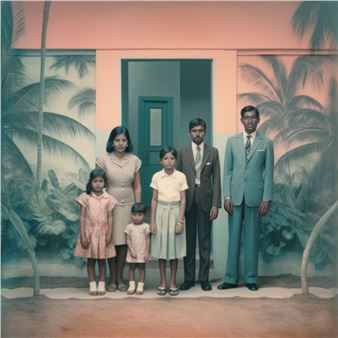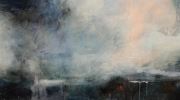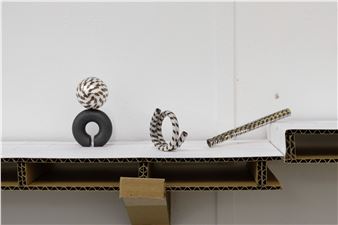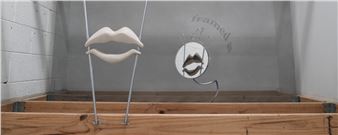Awakening Histories
Awakening Histories traces the deep connections between First Nations peoples and Southeast Asian seafarers from the port of Makassar in South Sulawesi, Indonesia, celebrating enduring relationships that remain prominent in art, language and material culture.
Featuring new commissions and key loans, the twenty-seven artists and collectives presented in this exhibition share stories of migration, trade and cultural exchange, highlighting the roles of trepang or sea cucumber, trochus and turtle shells, tamarind trees, palm wine, seafaring technology, metal tools, textiles and patterns in histories shared across the ocean. Artworks reflect on stories and songs of the interactions that have taken place across the north of this continent, now known as Australia, from the Gulf of Carpentaria, around Arnhem Land to Garamilla/DarwinвАФan area known as Marege to the sailors from MakassarвАФand beyond to the Kimberley region, or Kayu Djawa.
While the origin of the trepang trade is unknown, the displacement of landowners in the Sultanate of Gowa in South Sulawesi by Dutch colonists in the seventeenth century spurred its growth as an alternative source of income. The trepangers were mostly of Makassan, Bugis and Malay ethnicity and are considered the first people to practice Islam on this continent. Large fleets of praus or sailing vessels arrived on the trade winds each year, their crews collecting and processing trepang over several months until the winds changed and they sailed home with cargoes destined for sale and consumption in China. This was an international trade, negotiated with the sovereign peoples of Marege and Kayu Djawa. Towards the end of the nineteenth century, however, the South Australian Government began to impose import duties and then licensing fees on the praus. In 1906, the licenses were cancelledвАФin line with the White Australia PolicyвАФeffectively banning a centuries-old trade.
Foregrounding Indigenous sovereignty and ocean-centred storytelling, Awakening Histories reinforces the understanding of Country as sea, sky and land, the passing of knowledge through families and generationsвАФliving histories that counter assumptions that this landвАЩs peoples were isolated or that it was вАШdiscoveredвАЩ by Europeans during colonial expansion. The exhibition aims to shift understandings of this countryвАЩs history and contribute to the dialogue around First Nations ways of knowing and being, reasserting sovereignty.
MUMA acknowledges that this exhibition is taking place on Boonwurrung, Bunurong and Wurundjeri Country, the unceded lands of the Kulin Nations.
Awakening Histories is an exhibition exploring the deep connections between First Nations Peoples across the north of this continent, now known as Australia, and the Makassan seafarers of South Sulawesi, Indonesia.
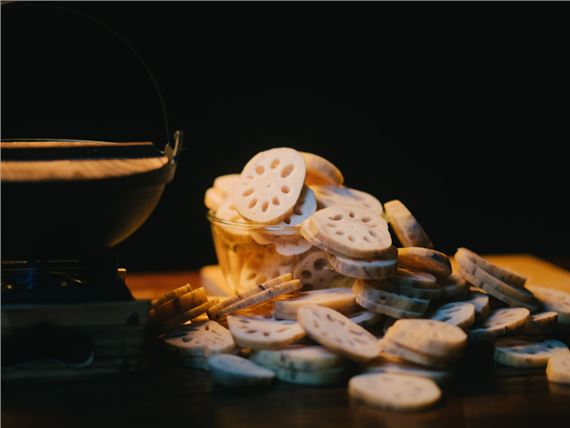
Recommended for you
Awakening Histories traces the deep connections between First Nations peoples and Southeast Asian seafarers from the port of Makassar in South Sulawesi, Indonesia, celebrating enduring relationships that remain prominent in art, language and material culture.
Featuring new commissions and key loans, the twenty-seven artists and collectives presented in this exhibition share stories of migration, trade and cultural exchange, highlighting the roles of trepang or sea cucumber, trochus and turtle shells, tamarind trees, palm wine, seafaring technology, metal tools, textiles and patterns in histories shared across the ocean. Artworks reflect on stories and songs of the interactions that have taken place across the north of this continent, now known as Australia, from the Gulf of Carpentaria, around Arnhem Land to Garamilla/DarwinвАФan area known as Marege to the sailors from MakassarвАФand beyond to the Kimberley region, or Kayu Djawa.
While the origin of the trepang trade is unknown, the displacement of landowners in the Sultanate of Gowa in South Sulawesi by Dutch colonists in the seventeenth century spurred its growth as an alternative source of income. The trepangers were mostly of Makassan, Bugis and Malay ethnicity and are considered the first people to practice Islam on this continent. Large fleets of praus or sailing vessels arrived on the trade winds each year, their crews collecting and processing trepang over several months until the winds changed and they sailed home with cargoes destined for sale and consumption in China. This was an international trade, negotiated with the sovereign peoples of Marege and Kayu Djawa. Towards the end of the nineteenth century, however, the South Australian Government began to impose import duties and then licensing fees on the praus. In 1906, the licenses were cancelledвАФin line with the White Australia PolicyвАФeffectively banning a centuries-old trade.
Foregrounding Indigenous sovereignty and ocean-centred storytelling, Awakening Histories reinforces the understanding of Country as sea, sky and land, the passing of knowledge through families and generationsвАФliving histories that counter assumptions that this landвАЩs peoples were isolated or that it was вАШdiscoveredвАЩ by Europeans during colonial expansion. The exhibition aims to shift understandings of this countryвАЩs history and contribute to the dialogue around First Nations ways of knowing and being, reasserting sovereignty.
MUMA acknowledges that this exhibition is taking place on Boonwurrung, Bunurong and Wurundjeri Country, the unceded lands of the Kulin Nations.
Awakening Histories is an exhibition exploring the deep connections between First Nations Peoples across the north of this continent, now known as Australia, and the Makassan seafarers of South Sulawesi, Indonesia.
Artists on show
- Colin Heenan-Purunatameri
- Abdul Rahman Abdullah
- Aziziah Diah Aprilya
- Bulthirrirri Wunu≈Лmurra
- Cian Dayrit
- Darrell Sibosado
- Dhambit Munu≈Лgurr
- Dogmilk Film
- Guan Wei
- Gunybi Ganambarr
- Ipeh Nur
- Jenna Lee
- Johnny Bulunbulun
- Karrabing Film Collective
- Margaret Rarru Garrawurra
- Mathaman Marika
- Michelle Woody
- Mr N Wunu≈Лmurra
- Ms D. Yinupi≈Лu
- Ms M. Wirrpanda
- Mulka Project
- Nancy Mcdinny
- Trevor Nakanapa
- Wilda Yanti Salam
- Zaenal Beta
Contact details

Related articles
Monash University Museum of Art | MUMA is proud to present Awakening Histories, a landmark exhibition opening from 4 October вАУ 6 December 2025 that explores the deep connections between the First Nations Peoples of Northern Australia.
вАЬWe discussed the exhibition title with the curatorium,вАЭ curatorium member and MUMA Director Dr Rebecca Coates tells me about Awakening Histories.

 ARTISTS
ARTISTS










